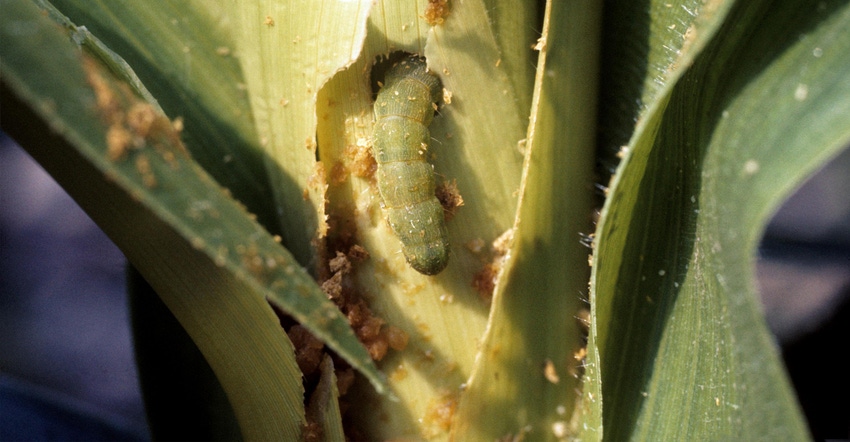September 12, 2018

Crop losses for critical food grains will increase substantially with global warming as rising temperatures boost the metabolism and population growth of insect pests, new research says.
"Climate change will have a negative impact on crops," says Scott Merrill of the University of Vermont, a co-author of the study published in Science. "We are going to see increased pest pressure from climate change."
Researchers looked at how insect pests that attack three staple crops — rice, corn and wheat — would respond under a variety of climate scenarios. They found that rising global temperatures would lead to an increase in crop losses from insects, especially in temperate regions. Losses are projected to rise by 10% to 25% per degree C of warming.
Just a 2-degree-C rise in global average temperature will result in total crop losses of approximately 213 million tons for the three grains, the researchers say.
Insects like it hotter, to a point
The losses will come from an increase in insect metabolism and from faster insect population growth rates. The link with metabolism is straightforward.
"When the temperature increases, the insects’ metabolism increases so they have to eat more," Merrill says. "That’s not good for crops."
The link with population growth, though, is more complex. Insects have an optimal temperature where their population grows best. If the temperature is too cold or too hot, the population will grow more slowly. That is why losses will be greatest in temperate regions but less severe in the tropics.
"Temperate regions are not at that optimal temperature, so if the temperature increases there, populations will grow faster," he says. "But insects in the tropics are already close to their optimal temperature, so the populations will actually grow slower. It's just too hot for them."
Corn to take a hit
According to the study, wheat, which is typically grown in cooler climates, will suffer the most, as increased temperatures will lead to greater insect metabolism and increased pest populations and survival rates over winter. Corn, which is grown in areas where insect population rates will either increase or decrease, will face a more uneven future.
For rice, which is mostly grown in tropical environments, crop losses will stabilize if average temperatures rise above 3 degrees C as population growth drops, counteracting the effect of increased metabolism in the pests.
"Rice losses will taper off as the temperature rises above a certain point," he says.
That means that the most substantial yield declines will happen in some of the world’s most productive agricultural regions.
"The overall picture is, if you're growing a lot of food in a temperate region, you're going to be hit hardest," he says.
"I hope our results demonstrate the importance of collecting more data on how pests will impact crop losses in a warming world, because collectively, our choice now is not whether or not we will allow warming to occur but how much warming we're willing to tolerate," says Curtis Deutsch of the University of Washington. Deutsch co-led the study with Joshua Tewksbury, director of Future Earth at the University of Colorado, Boulder.
France, China and the U.S., which produce most of the world’s corn, are among the countries that are expected to experience the largest increase in crop losses from insect pests. France and China, as major producers of wheat and rice, are also expected to face large increases in losses of those grains as well.
Reduced yields in these three staple crops are a concern because so many people around the world rely on them. Together they account for 42% of direct calories consumed by humans worldwide. Increased crop losses will result in a rise in food insecurity, especially in parts of the world where it is already rife, which could lead to potential conflict.
As farmers adapt to a changing climate by shifting planting dates or switching to new cultivars, they will also have to find ways to deal with pests by introducing new crop rotations or using more pesticides. But not all these strategies will be available to all farmers.
"There are a lot of things richer countries can do to reduce the effect, by increasing pesticide use or expanding integrated pest management strategies," Merrill says. "But poorer countries that rely on these crops as staple grains will have a harder time."
Source: University of Vermont
You May Also Like




